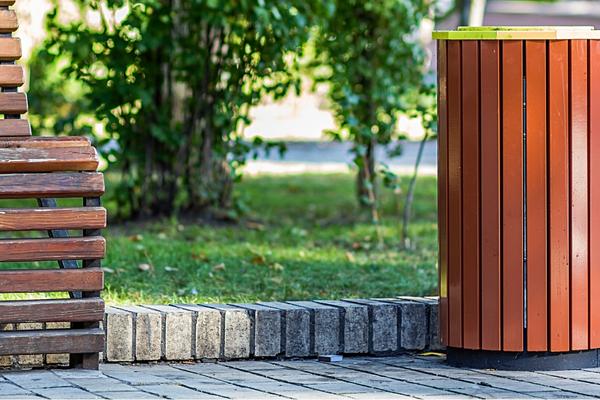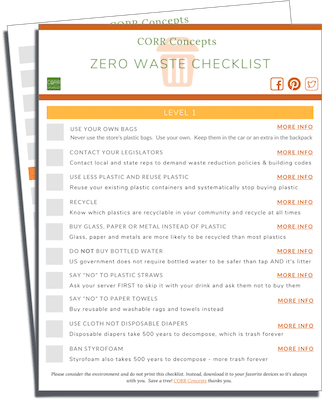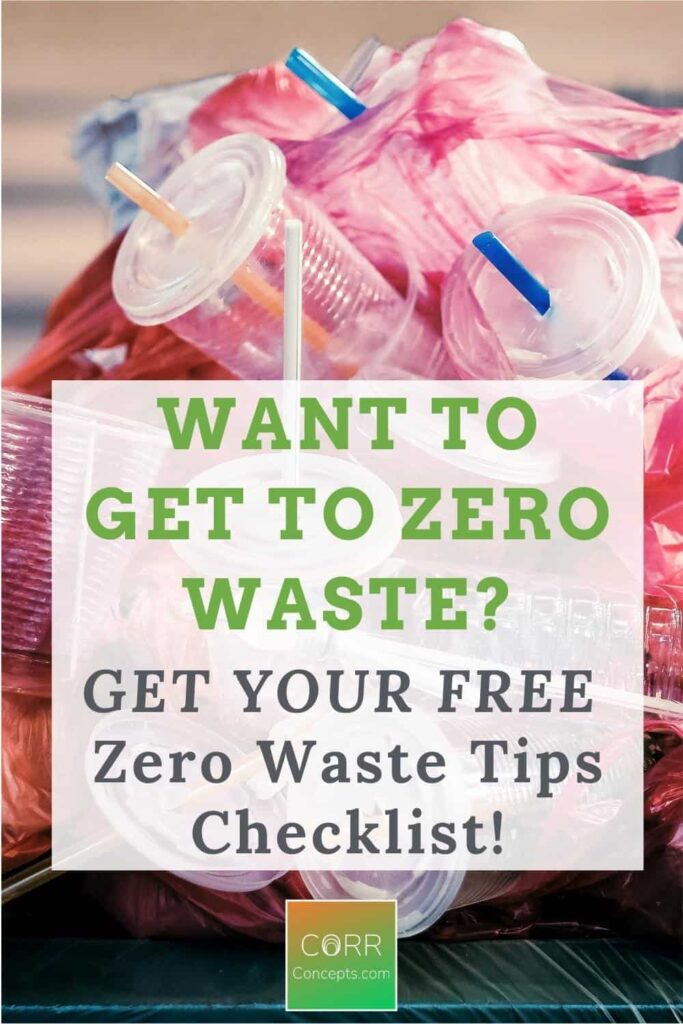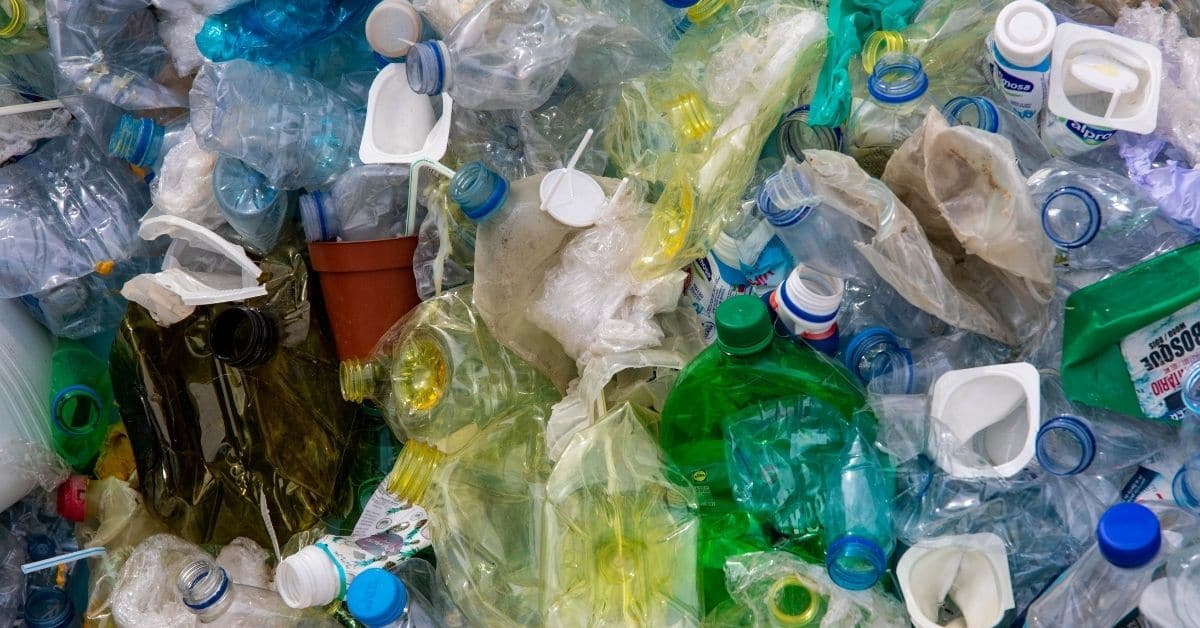
HOW TO ACHIEVE ZERO WASTE
Learn about the intent of zero waste, why it is important, and actionable waste reduction and money-saving tips to reduce your eco and carbon footprints.
This site contains affiliate links for your convenience. The goal is to first provide links to eco-friendly, ethical, and sustainable brands, and then to those same type brands that use Amazon (i.e., Climate Pledge Friendly Certification), if possible. Therefore, you may see multiple links for one option. Should you make a purchase through any link, I will receive a small commission at no additional cost to you. See my Disclaimers & Disclosures and Privacy Policy for more information.
Like this? Share it with others!
Learn the “What”, “Why”, and, more importantly, “How to” achieve zero waste with a FREE DOWNLOADABLE BELOW to get you started in reducing waste and saving money everyday.
What is Zero Waste?
Waste management are “the activities and actions required to manage waste from its inception to its final disposal.” This process includes the collection, transport, treatment and disposal of solid waste.
The goal of sustainable waste management is to reduce the amount of waste produced, ultimately eliminating the need for landfills. In other words, achieve zero waste.
After all, when we say, “Throw away”, know that there is no “away”. Our current, linear “take, make, waste” (a.k.a. “cradle to grave”) economy does have an endpoint: the landfill or other locations not designed for disposal, such as lakes, streams, groundwater. This is not sustainable.
The good news is that there are ways you can help now. You can individually implement methods of reducing your waste production through your daily actions and through products you use.
Little to big methods of change implemented individually can culminate to major, positive results towards reducing negative impacts on our environment.
Why is Zero Waste Important?
The waste collection and disposal process plays a critical role in the health of our environment, society and economy. Landfills emit greenhouse gases, such as carbon dioxide (CO2) and methane (CH4) – methane being the most toxic – that contribute to global warming and climate change.
“Landfills are the third-largest source of human-related methane emissions in the U.S.”, per the EPA. Effluent waste and wastewater treatment plants also produce the same gases, as well as nitrous oxide (N2O).
Let’s not forget the indirect greenhouse gas emissions from the energy generation used in our collection to disposal and treatment of waste process. Waste is being shipped further and further away, even to other countries, because of the reduced U.S. areas allowed for landfills and waste disposal.
Additionally, more and more plastic waste, is ending up in our oceans, culminating in growing plastic gyres known as “Garbage Patches”. This is causing marine life to get tangled up in our plastic waste or marine life is ingesting our plastic waste. If fish who ingest plastic waste are caught for consumption, then you are eating that plastic.
Waste disposal areas can have a wide-range of negative social and health impacts to those who live nearby, from irritating noise, smell, smoke and flies to certain types of cancer and birth defects. These impacts undoubtedly result in increased need for medical attention, medical bills and increased insurance rates.
As you can see, when the environment is negatively impacted by waste and the resulting greenhouse gases, it has negative impacts on our society and economy. It’s a viscous cycle that will not end until we reduce, and eventually end, our current linear “take, make, waste” economy and transform into a circular economy, preferably using the “cradle to cradle” approach.
Obviously, many benefits exist to reducing and eliminating waste production, from reduced landfills to healthier land and marine life to safer and healthier communities to “green jobs” creation.
How To Work Towards Zero Waste
Zero Waste – Behavior Changes
Changing your daily consumption and disposal habits is the other component to reducing your waste production. These habit changes can be done in different levels.
Go ahead and get started by downloading my Zero Waste Checklist for FREE. This checklist will take you through Level 1 (easy and least expensive) to Level 3 (advanced and more upfront costs) steps to achieve zero waste.
All level steps will provide you a return on your financial investment no matter which steps you choose to take.
If you want more tips and ideas, check out the Zero Waste blog posts that are continually added for your convenience.
Download and Get Started…
Get zero waste tips at your fingertips. Download your Zero Waste Checklist for FREE. I encourage you to review these tips, pick some to use, and take the Zero Waste Challenge below.

Zero Waste – Conscious Consumerism
People have the most power to make positive change through easy, day-to-day changes. The U.S., alone, had over 300 million people in 2019. If we all individually were “conscious consumers”, think about what change we could make. So vote with your dollars.
Your shift in purchasing could cause business systems to be redesigned and regulated to shift from a linear economy to a circular economy to make achieving zero waste easier. That would make the Earth’s connected systems the priority, thereby working within the natural laws and systems with no harmful effects to protect the Earth’s biodiversity that sustain us.
That said, CORR Concepts is doing the home work for you to take the guesswork out of waste reduction products. Click the button below to be taken to the zero waste product third-party certifier list and ever-growing list of zero waste products you can use to lower your eco and carbon footprints.
Take the Zero Waste Challenge
Take the CORR Concepts “Zero Waste Challenge” by doing:
1. Take the pledge to never use plastic bags provided by stores and bring your own bags for all shopping. Get others to take the pledge.
2. Pick at least one more of the Zero Waste Initiatives and implement them into your everyday life. Periodically, go back to remeasure your Ecological and/or Carbon Footprint to see if you’ve lowered your score. Keep adding more Zero Waste tips to your daily life to keep reducing your footprint(s).
3. Share this webpage with at least one person so that the sustainability message will spread and enrich and benefit us all.


